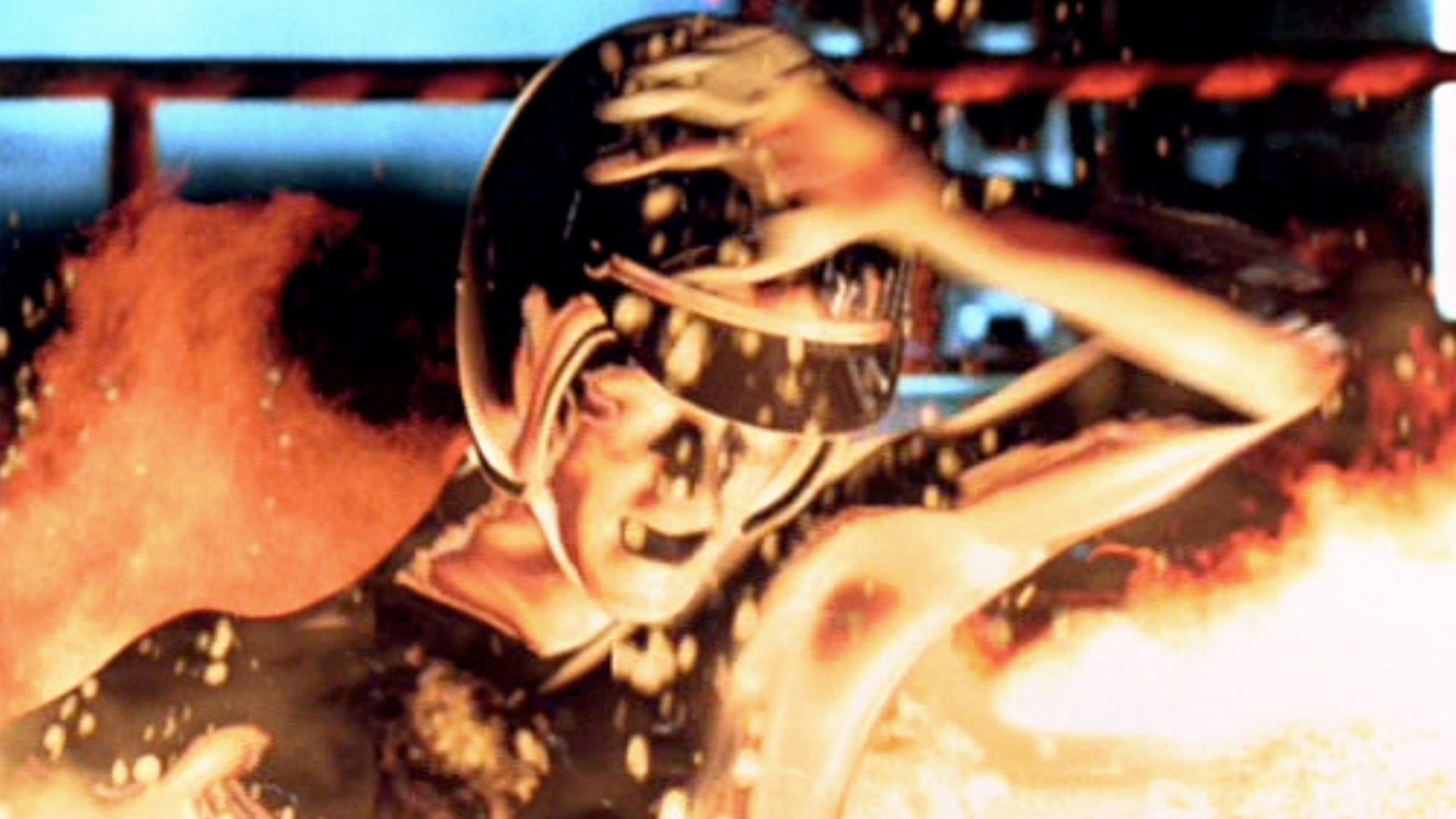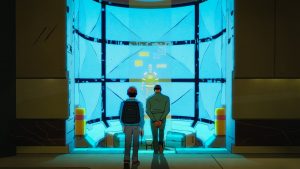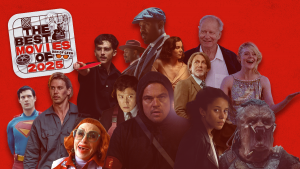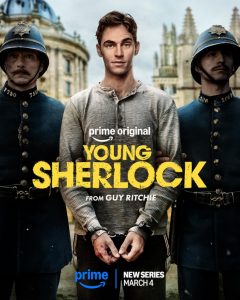
Sci-fi films and special effects have gone hand-in-hand for over the last 120 years. For much of that time, the idea of going to see the latest sci-fi movie has partially been based on the appeal of seeing what incredible effects its filmmakers would bring to the biggest screen possible. Though the evolution of special effects on film certainly isn’t limited to the sci-fi genre, it’s remarkably easy to trace the evolution of movie special effects by discussing some of the most significant sci-fi films ever.
These are the sci-fi films with revolutionary special effects that showed us the impossible wasn’t quite as fantastical as we thought.
A Trip to the Moon (1902)
A Trip to the Moon wasn’t technically the first movie with special effects, though it often feels worthy of that honor. Still, at the very least, it was decades ahead of its time in terms of both the special effect techniques it utilized and director Georges Méliès’ decision to essentially build a movie around those effects. That’s the biggest reason why this journey has to begin with A Trip to the Moon. Yes, the use of concepts like substitution splices, dissolves, and even the special studio in which A Trip to the Moon was filmed paved the way for so many special effects that followed. Ultimately, this movie’s greatest contribution may have been the ways it opened so many eyes to possibilities that may have otherwise never been imagined.
Metropolis (1927)
With Metropolis, Fritz Lang dared to use special effects to create not just a few spectacle shots but an entire sci-fi world. Through a combination of miniatures, projection techniques, and old-fashioned perspective tricks, Lang convincingly showcased actors living in an impossible city and using futuristic devices that we wouldn’t see the real-world equivalent of for decades to come (if ever). Perhaps most importantly though, Metropolis was the first major film to explore the possibilities of the Schüfftan process: a complicated filming technique that paved the way for what we now know as blue screen. Despite its age, the obvious effort that went into every shot of Metropolis makes it an impressive experience to this day.
King Kong (1933)
Though some may argue against King Kong’s sci-fi credentials, it is undoubtedly one of the most significant milestones in the evolution of special effects. Of particular note is its use of stop-motion animation, which (when combined with matte paintings and miniatures) allowed the filmmakers and crew to create elaborate full-motion scenes.
More importantly, King Kong’s effects team found ways to convincingly insert actors into those stop-motion shots. In its day, those scenes felt like witchcraft. Today, examining the work that went into those shots invokes a similar feeling. That blend of manufactured and real was not only technically revolutionary but was perhaps one of the reasons why King Kong was such a critically celebrated hit that began to widely legitimize such special effects heavy productions.
Destination Moon (1950)
There were certainly advancements in special effects throughout the 1940s, though it would be difficult to classify some of those milestone movies as “sci-fi.” Things would certainly change in the 1950s though when a renewed cultural fascination with space kicked off a new age of science fiction filmmaking. Destination Moon fits rather perfectly into the intersection of those interests and movements.
This film endeavored to showcase what man’s first flight to the moon may look like based on our knowledge of the technology available at that time. Rather than portray a completely fantastical scenario, it tried to imagine a future that many at the time felt (hoped, really) was right around the corner. That emphasis on relative realism (and the effects used to create that sensation) created a new path for a new generation of sci-fi filmmakers. It also featured an “advert” section starring Woody Woodpecker that at least one of the films we’ll soon talk about almost certainly borrowed from.
The War of the Worlds (1953)
As noted above, the 1940s was a relatively dry period for the evolution of special effects in sci-fi filmmaking. That whole World War II thing dampened both the investments in special effect advancements and arguably the hunger for the kinds of movies such effects were typically found in. It’s fascinating, then, that the next special effects milestone movie not only has “War” in its title but emphasizes the entertainment value of that concept.
So many of War of the Worlds‘ countless special effect innovations revolve around explosions, death, horror, and destruction on an unprecedented scale. In the short term, this movie’s blockbuster sci-fi style created a visual language and pop culture concepts that paved the way for countless drive-in films that followed. In the long term, it inspired generations of disaster films, sci-fi epics, and revolutionary TV shows. Watching this movie today for the first time is sure to provoke several reactions of “Oh, so that’s where that comes from.”
Godzilla (1954)
Interestingly, Godzilla could be considered a kind of “accidental” entry to this list. Initially, VFX director Eiji Tsuburaya desired to shoot Godzilla using extensive stop-motion animation. Unfortunately, the time and money required to do so proved prohibitive. So he settled for a combination of techniques that included miniatures, a ton of optical effects, and, yes, a guy in a costume.
Crucially, that combination of concepts not only helped form the modern idea of the Kaiju genre but also showed how fun a giant monster movie could be. Granted, lower-budget films that followed lacked the filmmaking and visual refinements that elevated this movie, but watching miniatures be built and destroyed in this manner proved to be a big part of the draw.
Fantastic Voyage (1966)
Fantastic Voyage feels like both the last “’50s sci-fi” movie and the first film in what would soon prove to be an incredible new age of special effects. The concept of scientists shrinking down to enter a human body sounds like a Roger Corman special, but the techniques used to convincingly portray that scenario were groundbreaking. Richard Fleischer assembled a dream team of special effects engineers to construct some of the most impressive miniatures, sets, and bits of visual trickery ever captured on film up to that point.
Culturally, Fantastic Voyage served as both a reminder of the drawing power of special effects (when done well) and the rising costs of expectations for said effects. A large portion of Fantastic Voyage’s considerable budget was spent on the movie’s effects, and the post-production period reportedly stretched on for six long months.
2001: A Space Odyssey (1968)
1955’s Conquest of Space’s emphasis on sci-fi realism was a major influence on 2001, but as he often loved to do, Stanley Kubrick decided to try to take things a few steps further. He not only wanted to pursue a more realistic style of sci-fi storytelling; he wanted to capture as many of those shots “in-camera” as possible to convey the idea that the incredible things being portrayed were somehow captured on film.
The results were extraordinary. Audiences in 1968 had never seen such incredible concepts conveyed in such a way. Perhaps more importantly, you can watch 2001 today and not find yourself pulled away from the illusion of the thing due to “obvious” special effects as may be the case with other films that came before it.
Westworld (1973)
Among its many other notable qualities, Westworld was the first major film to utilize a technique known as digital image processing. Essentially, director Michael Crichton had a digital image processing engineer use the technique to create a brief series of sequences (about two and a half minutes worth) that allow us to see the world through the android Gunslinger’s infrared point of view. That technique evolved to become what we now refer to as CGI. Although this is an incredibly humble beginning for such an important concept, the intended effect has remained largely the same over the years. Those brief sequences caused audiences everywhere to gasp, pause, and ask, “How did they do that?”
Star Wars (1977)
It’s difficult to discuss Star Wars‘ cultural impact in such little space without feeling slightly overwhelmed. In a pinch though, it’s remarkably easy to summarize this movie’s impact on the evolution of special effects with the letters “ILM.”
Industrial Lights and Magic was tasked with bringing George Lucas’ wildest dreams to life. Despite lacking nearly every conceivable resource, they utilized a brilliant combination of new and old techniques to deliver what Lucas wanted most: visuals nobody had ever even dreamed of capturing. ILM would go on to contribute to some of the most technically impressive sci-fi films ever, and their work here created a sizable barrier that crucially separates what came before from what came after.
Tron (1982)
Tron’s special effects were so far ahead of their time that the Academy Awards disqualified the film from contention for the Best Visual Effects award because they felt that its extensive use of computer-generated animation was a form of cheating. To be fair, watching Tron has always been a somewhat jarring experience, and there are more than a few people today who will argue that the overuse of CGI remains a crime and a shame.
Even still, you have to be impressed with the magnitude of Tron’s technical accomplishments. While its Lightcycle sequence is the obvious star of the show so far as its innovations go, there is something to be said for Tron’s extensive use of color. Compared to modern CGI-fueled films that often try their best to disguise their computer imagery, Tron just “pops” in a way that makes its use of similar technology feel like a deliberate artistic choice rather than a simple necessity.
Blade Runner (1982)
At the 1983 Academy Awards, Blade Runner and Poltergeist lost the Best Visual Effects race to a little film called E.T. the Extra-Terrestrial. It’s a questionable decision in retrospect, though it’s interesting that Blade Runner was up against a Steven Spielberg-directed and Steven Spielberg-produced film that year, given that the Blade Runner team borrowed several techniques that had been invented or advanced during the production of Close Encounters of the Third Kind.
However, the Blade Runner team took things to a new level. The highlight of the film’s numerous visual effects are those sweeping shots that showcase the smallest details of a futuristic version of Los Angeles. Those shots were achieved through a combination of matte paintings, miniatures, and a complex series of lighting techniques that often required shots to be recorded over each other just to get the exposure right. The effort was considerable, but the results are worth it. Few films come close to challenging the beauty of Blade Runner’s sci-fi cityscapes.
The Thing (1982)
As you may know, The Thing wasn’t exactly a hit in its day, which makes any arguments about its influence (especially immediate influences) on filmmaking inherently tricky. However, that shouldn’t diminish the fact that The Thing is still widely considered the pinnacle of practical effects.
Rob Bottin nearly destroyed himself to make those effects happen, but years later, his incredible work remains a celebration of (and revolution for) makeup, props, creatures, gore, and all things practical. Perhaps it’s unrealistic to expect every movie to deliver what The Thing delivers in that respect, but Carpenter’s work remains a vital reminder that no amount of CGI innovations can ever entirely replace the practical approach. These effects are truly timeless in a way that invokes the very concept of “movie magic.”
The Abyss (1989)
The first appearance of James Cameron on this list (though certainly not the last) is a movie that sometimes feels strangely forgotten relative to its pedigree and success. When you do hear people discuss The Abyss, though, they are usually discussing the thing that has long defined this movie: its wonderful special effects.
Given that much of this movie was essentially filmed in a 7.5 million gallon water tank (with a “smaller” 2.5 million gallon tank being used as a secondary location) nearly every shot in The Abyss is a technical marvel. At the time of its release, though, the show-stealing scene was an encounter with a CGI water creature. That scene was the result of a series of technological innovations and countless hours of artistic manpower that forced everyone (the Academy Awards included) to acknowledge that we were entering a new era of VFX.
Terminator 2 (1991)
Every now and then, someone will ask about movie special effects that still “hold up.” Most of the time, the most popular contribution to that discussion is “Terminator 2.” That’s hardly a coincidence. So much of Terminator 2’s considerable special effects budget was devoted to blending the CGI and practical effects in ways that would make the impossible look genuine.
The eternal highlight of that approach is the T-1000. In the earliest days of more modern CGI, the Terminator 2 team aspired to create a character that not only relied heavily on such techniques but needed to be able to keep up with the frantic pace of the film’s action scenes. They ended up with a CGI character that showed just how far we had come from the stained glass knight in 1985’s Young Sherlock Holmes.
Jurassic Park (1993)
Just as Superman made audiences believe a man could fly, Steven Spielberg and the folks at ILM wanted audiences to believe they had done what character Dr. John Hammond claimed to have accomplished: brought dinosaurs back to life for our amusement. Modern wisdom tells us you do so through extensive use of computer-generated imagery. Yet there are famously only four minutes of CGI dinosaurs in Jurassic Park despite the fact those dinosaurs are on-screen for roughly 15 minutes of the movie.
What ILM essentially did with this movie was use CGI to replace shots that would have previously relied on stop motion animation. Like King Kong before it, Jurassic Park utilized a fascinating blend of filmmaking techniques that allowed human characters to interact (relatively speaking) with CGI creations. Audiences were simply wowed, and industry professionals everywhere were forced to catch up with a bold new world.
The Matrix (1999)
By this point, it’s really no secret that The Matrix utilized a number of filmmaking techniques that were previously popular in largely international productions. However, it’s important to also recognize the ways that the Wachowskis and this movie’s VFX team used special effects to elevate such techniques while preserving their original filmmaking spirit and intent.
The Matrix features significantly more CGI shots than the films we’ve discussed so far. Yet the Wachowskis were careful to shoot The Matrix in a way that ensured such effects would read as “legible” to a 1999 audience. The most notable instance of that approach is the famous bullet time sequence which, like so many other aspects of The Matrix, really paved a new road for action filmmaking that the industry arguably still walks on to this day.
Final Fantasy: The Spirits Within (2001)
Final Fantasy: The Spirits Within is the worst movie we will discuss in this article. It’s also a notable box office bomb. Yet you can’t fairly discuss this topic without discussing the first fully-CGI movie that attempted to feature realistic characters and settings. The amount of money, time, and talent that went into that endeavor is staggering—especially since the film ultimately doesn’t “work.” Even so, this movie kicked off an ongoing fascination with navigating the uncanny valley via film. It also ignited a debate about the ethics of our ability to digitally create accurate approximations of long deceased actors, which is obviously still with us today.
Sky Captain and the World of Tomorrow (2004)
The idea behind Sky Captain‘s special effects was rather simple. What if you filmed a live-action movie entirely in front of CGI backgrounds that would allow you to construct whatever incredible sets and scenarios you could dream of? The reality of Sky Captain’s ambition proved to be incredibly complicated and expensive. Roughly 100 digital effects artists in different fields worked for months to “fill in the blanks” for the all-star cast that acted entirely in front of green and blue screens.
The results are…mixed. While Sky Captain enjoys a much more favorable legacy than Spirits Within, it too is often plagued by the fact that it’s difficult to watch without being (often painfully) aware of how it was made. There’s certainly quite a bit to like about this film, though it may forever be known as the “for better or worse” turning point in the industry’s increasing reliance on green screen sets.
Avatar (2009)
Avatar’s special effects are both a big part of the reason why it’s the highest-grossing movie ever (second-highest adjusted for inflation) and a sometimes divisive film to this day. For his big return to the big screen, director James Cameron decided to explore the boundaries of CGI-driven filmmaking just as he enjoys exploring the depths of the ocean. While there is certainly an argument to be had over how much was sacrificed or simply lost in that pursuit (pacing, writing, and characters, for instance), Avatar’s pure technical effects set a standard that you could argue were really only beaten by its sequel. It’s also one of the few films in the history of movies to undeniably justify its 3D gimmick.
Mad Max: Fury Road (2015)
Seeing Mad Max: Fury Road for the first time is one of those slightly more recent theatrical experiences that many of us wouldn’t trade for the world. There was some hype about this film, sure, but who among us can say we were properly prepared for the things George Miller managed to capture on film, and the often practical ways the film’s crew went about creating them?
Realistically, we can’t expect other filmmakers to recreate what Miller did here or even get permission to attempt to do so. In this movie though, we find both the culmination of so many ideas and evolutions we’ve previously discussed as well as a valuable reminder that (when done well) special effects are a vital part of experiencing a film as well as watching it.
The post 20 Sci-Fi Movies That Revolutionized Special Effects appeared first on Den of Geek.









